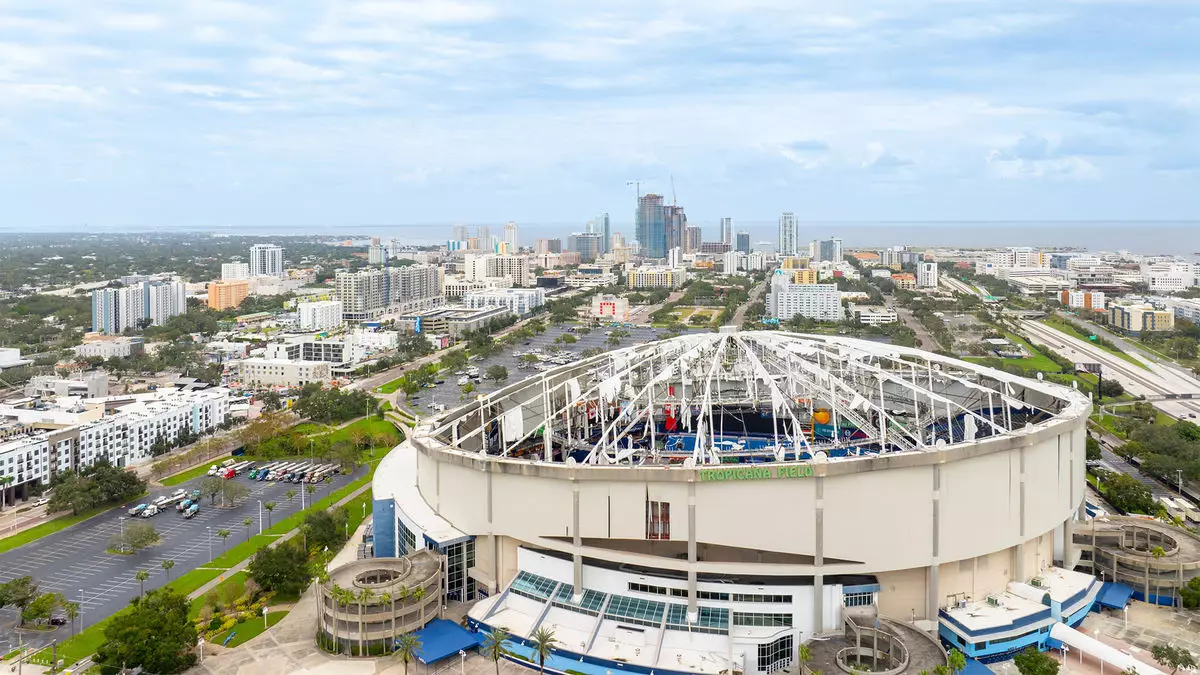The aftermath of Hurricanes Helene and Milton has left a substantial mark on Florida’s tourism landscape, particularly impacting the Gulf Coast region. The initial assessments reveal a dire situation for many small, independent hospitality businesses that now confront an uncertain and protracted recovery process. This situation is especially pronounced given that these local enterprises often lack the resources needed to rebuild and adapt to new economic realities following catastrophic events. According to Arthur Huang, an associate professor at the University of Central Florida, ongoing damage assessments are critical as stakeholders attempt to grasp the full scope of the storms’ impact.
Hurricane Helene, which struck Florida on September 26 as a Category 4 storm, was shortly followed by Hurricane Milton, making landfall on October 9 as a Category 3 storm. This one-two punch has left coastal communities juggling with destruction while the spotlight increasingly shines on the long-term consequences for the tourism sector. Peter Ricci, the director of Florida Atlantic University’s Hospitality and Tourism Management program, emphasizes that popular tourist spots like Sarasota and Punta Gorda are likely to experience significant disruption. The compounded effects of these storms raise serious concerns about the viability of reopening for countless small businesses reliant on tourist traffic.
The disaster’s ramifications for small-scale operators are profound; many are likely to weigh the cost-benefit of rebuilding against taking insurance payouts and exiting the market altogether. Ricci points to Fort Myers Beach, citing the aftermath of Hurricane Ian in 2022, where numerous small hotels and resorts chose to not reopen rather than navigate the complications of restoration. Features like outdated infrastructure and underinsurance are pivotal in these decisions, as many mom-and-pop businesses established decades ago may find it financially unfeasible to adhere to modern building codes.
Huang articulates similar fears, foreseeing a pronounced imbalance in recovery trajectories for smaller establishments. These businesses are disproportionately affected, and this creates a ripple effect that extends across the local workforce. With restaurants and hotels shuttered for extended periods, employees face the stark reality of loss of income, leading to broader socio-economic challenges within these communities. The inherent fragility of small businesses exposed by such disasters unfortunately underscores a long-standing issue that hurricanes exacerbate.
The destruction wrought by Helene and Milton could usher in a phase of accelerated change within Florida’s tourism industry. Ricci predicts a drift toward higher-end tourism, wherein the economic landscape will witness an influx of well-capitalized developers who can afford to rebuild. The inevitable transition to more upscale accommodation options signifies a shift in the tourism fabric of the region. While such changes may improve the aesthetic appeal and infrastructure, the looming pressure of elevated costs for travelers could displace the family-oriented, budget-conscious tourism that small, local businesses traditionally cultivated.
Furthermore, as new upscale developments emerge, they may alter customers’ perceptions and experiences of Florida’s Gulf Coast. While some may welcome upgraded facilities, the potential loss of unique, locally owned establishments and the charm they bring to the area is immeasurable. Cities like Fort Myers Beach could see their character diluted, as the focus shifts towards luxury developments at the expense of small businesses that reflect local culture.
Inland areas such as Tampa and Orlando, though shielded from the direct impacts of the storms, may not escape unscathed either. Both cities are experiencing anticipatory ripples through cancellations and postponements of critical events and meetings. As Ricci notes, this will likely challenge group business dynamics in the ensuing months. The timing of the hurricanes, strategically placed just ahead of Florida’s high tourism season, complicates the already delicate balance between maintaining lucrative holiday bookings while reestablishing business operations.
Amidst these trials, Visit Florida—a vital player in the state’s tourism revival—has rolled out initiatives aimed at recovery support. Their messaging strategy, characterized by campaigns like “Stronger Than the Storm,” is designed to reassure both domestic and international tourists that many areas remain open and inviting. Dana Young, Visit Florida’s CEO, emphasizes the critical need for collaboration among stakeholders to ensure a robust resurgence for the industry.
The impact of hurricanes Helene and Milton will indubitably reshape Florida’s tourism landscape in myriad ways. Recovery will not be uniform; larger corporate entities may emerge from the chaos more resilient than their smaller counterparts. However, the heart of Florida’s tourism often lies in its eclectic mix of locally owned businesses, which now face immeasurable challenges. As the state collectively navigates this stormy terrain, maintaining focus on community-centric recovery efforts will be crucial. The resilience displayed in the face of disasters may redefine not only how Florida responds to such challenges, but also how it evolves its tourism narrative moving forward.


Leave a Reply